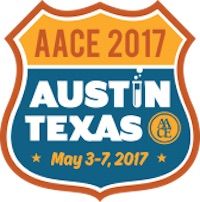Article
Diabetes in the Elderly Addressed at AACE Meeting
Author(s):
More than 25% of the US population over the age of 65 has diabetes.

More than 25% of the US population over the age of 65 has diabetes, and with the “endocrine system maladies that require nuanced treatment,” as noted by the panel of experts at the AACE 26th Annual Scientific and Clinical Congress, comes a substantially higher risk of developing acute and chronic microvascular and cardiovascular complications.
Addressing the audience during “The Aging Patient: Endocrinology for the Ages,” M. Sue Kirkman, MD, professior of medicine in the Division of Endocrinology at the University of North Carolina Chapel Hill Diabetes Care Center, a specialist in diabetes in the elderly, noted that the unique challenges in treating elderly patients with diabetes are multifaceted.
She explained that, simply because of their age, this population is routinely excluded from randomized controlled trials, making it difficult to conduct the needed research to determine the appropriate courses of treatment to address the range of functional status and comorbidities that can be present in this age group.
Next, John E. Morley, director of the Division of Geriatric Medicine at St. Louis University School of Medicine, discussed the topic of sarcopenia. He suggested that while identifying those at risk for the condition can be straightforward, the diagnosis and treatment of these individuals can be more challenging, and, in fact, it has only been in the past 20 years that the condition has been the focus of rigorous clinical examination.
The age-related loss of skeletal muscle mass and function has seen advancements in detection, and interventions, such as higher dietary protein intake, resistance exercise, and testosterone therapy combined with a leucine-enriched amino acid supplement and vitamin D, are improving outcomes. Sacropenia is a major contributor to an aging person’s loss of independence and deteriorating quality of life, and it also has an adverse impact on the immune system and other bodily processes following a traumatic event, such as an illness, surgery, or injury.
Rounding out the expert panel was Sandeep Dhindsa, MD, associate professor of internal medicine and division director of Endocrinology, Diabetes, and Metabolism at Saint Louis University School of Medicine. He spoke on the topic of andropause, which is late-onset hypogonadism, the age-related decline in testosterone levels, and the impact of testosterone replacement therapy on andropausal patients. These patients typically have symptoms such as low libido and erectile dysfunction; however, the most recognizable clinical signs are decreased skeletal muscle and bone mass, decreased muscle strength, and increased central body fat. He shared evidence with the audience on the benefits of testosterone replacement therapy in hypogonadal men. He also refuted claims, based on the currently available evidence, that this therapy causes side effects, such as an enlarged prostate and an increased risk of myocardial infarction and stroke.
The AACE meeting is being held in Austin, Texas, May 3-7, 2017.
Related Content:
Diabetes Guidelines May Not Apply to Oldest Patients
Kasia Lipska Argues Against Over-Treatment of the Oldest Diabetes Patients
Prediabetic Men Suffer from Depression, Andropausal Syndrome at Higher Rates




